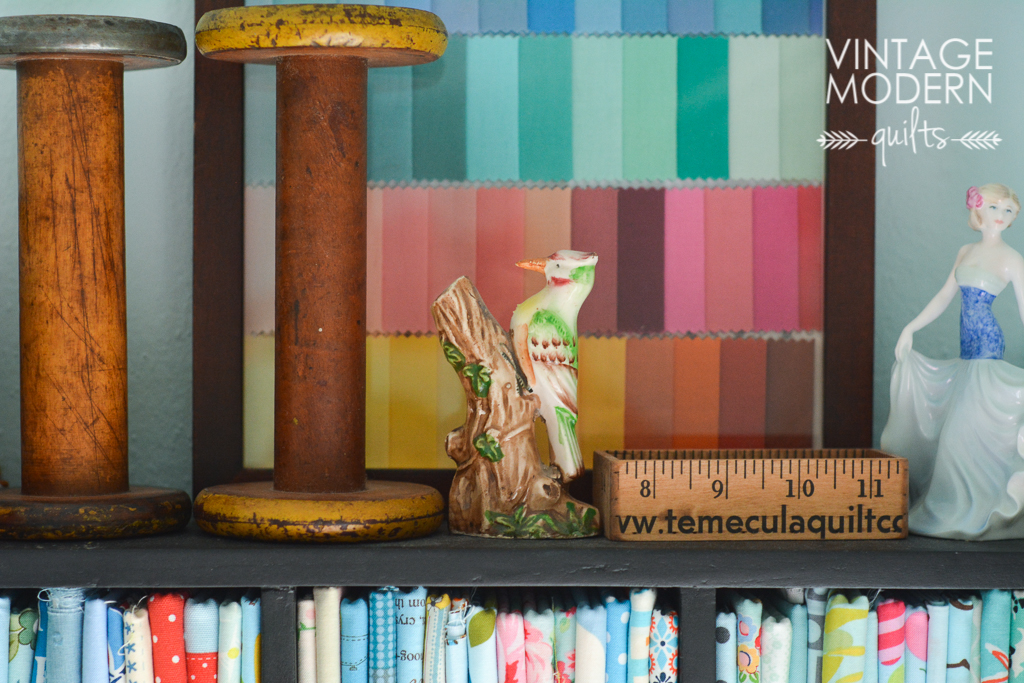Create a Cherished Memory Quilt from Old Clothes for Lasting Keepsakes
Begin with selecting various pieces that hold significance–each fabric tells a story. Cotton shirts, denim jeans, and even soft baby blankets can be perfect candidates. Ensure that the textiles are clean and free of any damage before cutting them into uniform squares or rectangles.
Next, plan the arrangement strategically. Lay out your chosen pieces on a flat surface to visualize the color palette and patterns. This allows you to create a balanced look while incorporating the memories attached to each item. Consider enhancing the design with additional elements like embroidery or fabric paint to personalize it further.
When assembly time arrives, choose an appropriate backing material; flannel or cotton works well to add warmth. Depending on your skills, opt for hand stitching or a sewing machine to attach the pieces securely. Remember to use a durable thread that complements the colors of your textiles.
To finish, consider adding a layer of batting for softness and warmth, followed by a final backing layer. Whether you choose to tie the layers together with knots or quilt them for added texture, ensure that your keepsake is thoughtfully crafted. This thoughtful approach will result in a unique item full of cherished memories.
Selecting the Right Fabrics and Clothes for Your Quilt
Focus on sustainability and personal significance. Start with garments that hold sentimental value, such as childhood favorites or family heirlooms. This connection adds depth to your piecing project.
Choose fabrics with varying textures and durability. Consider materials like cotton, linen, or denim for their ease of use and resilience. Avoid heavy synthetics that can be challenging to sew and manipulate.
Color Palette Considerations
Establish a cohesive color scheme. Select pieces that complement each other, creating harmony across your final piece. Use swatches to visualize combinations before cutting and stitching.
Design and Patterns
Incorporate a mix of patterns to add visual interest but maintain balance. Combine large prints with small designs for depth. Ensure that busy patterns don’t clash by pairing them with solid colors to create a pleasing aesthetic.
Preparing Fabrics: Washing, Cutting, and Ironing
Wash textile remnants separately in cold water on a gentle cycle. Use a mild detergent to avoid damaging fibers. If possible, perform a patch test on any fabric that has not been previously laundered to check for colorfastness.
Cutting Techniques
After drying, lay out the materials flat on a clean surface. Use sharp fabric scissors or a rotary cutter for precise cuts. Measure sections carefully with a ruler or measuring tape to ensure uniformity. It’s helpful to use a cutting mat underneath for stability and to prevent damage to your work surface.
Ironing for Preparation
Iron each piece on the appropriate setting for the fabric type. Cotton materials usually require a higher heat, while synthetics should be on a lower setting. Avoid direct contact with the iron on printed fabrics; instead, use a pressing cloth to protect designs and prevent scorch marks. Make sure each piece is smooth and wrinkle-free before moving onto the next phase of your project.
Choosing a Pattern and Layout for Your Memory Quilt
Select a geometric or random design that resonates with the sentimental value of your textiles. A grid layout allows for uniformity, while an asymmetrical approach adds a whimsical touch. Consider incorporating family symbols or motifs that reflect shared experiences.
Pattern Ideas
Different patterns evoke distinct feelings. Here are a few suggestions:
| Pattern Type | Description |
|---|---|
| Log Cabin | Uses strips of fabric arranged in a rectangular pattern, often symbolizing warmth and protection. |
| Star | Star designs suggest guidance and hope, perfect for celebrating memories and aspirations. |
| Patchwork | Random pieces stitched together, showcasing variety and individual stories. |
| Diamond | Creates a striking visual effect, often representing strength and resilience. |
Layout Tips
Arrange the selected pieces in a way that flows well. Test configurations on a flat surface before finalizing. Group similar colors or textures together for a cohesive look. Consider the size of each section; varying dimensions can add depth.
Take into account the scale of the parts; larger pieces may dominate, while smaller ones can create intricate details. Keep balance in mind – both visual and emotional. This thoughtful placement enhances the narrative your piece conveys.
Basic Sewing Techniques for Piecing Your Quilt Together
Utilize a straight stitch for joining pieces. This straightforward technique keeps seams secure. Set your sewing machine to a stitch length of 2.5 to 3.0 mm for optimal durability.
Press each seam as you sew. Use an iron to open or press seams to one side, which enhances the overall appearance and structure. This step is vital for precision during assembly.
Employ the 1/4 inch seam allowance. Accurate measurement ensures pieces fit snugly without excess bulk. Use a quilting ruler or gauge for consistency.
- Use pins to hold layers together before sewing.
- Start sewing from the edge of the fabric for clean lines.
- Backstitch at the beginning and end of seams for reinforcement.
Incorporate chain piecing for efficiency. Feed pieces sequentially through the machine without cutting threads in between. This method speeds up the process and minimizes fabric handling.
Consider using a seam ripper for correcting mistakes. This tool allows for easy removal of misaligned stitches, maintaining the integrity of your design.
Finish raw edges with a zigzag stitch or serger to prevent fraying. This helps maintain the garment strength and longevity in your project.
Remember to frequently check your fabric alignment as you sew. Ensuring pieces align will prevent puckering and mismatched seams.
Add Personal Touches: Embroidery and Fabric Paint Ideas
Incorporate personalized elements with embroidery techniques to add character. Start with simple designs like initials or small symbols. Use contrasting colors to make these details pop against the fabric background.
Embroidery Techniques
- Cross-Stitch: Ideal for creating intricate patterns, this technique allows you to customize letters or shapes with precision.
- Satin Stitch: Perfect for filling in shapes or letters, providing a smooth, polished look.
- Appliqué: Sew additional fabric pieces onto the base layer, creating a layered effect with interesting textures.
Choose threads that complement or contrast with the fabric shades, enhancing the overall appearance.
Fabric Paint Ideas
Fabric paint offers flexibility in design. Explore these suggestions:
- Stenciled Patterns: Create stencils with unique shapes or sayings that resonate with you. Apply paint for consistent results.
- Freehand Designs: Use brushes to paint freeform. Doodles, abstract shapes, or quotes can bring your textiles to life.
- Splatter Technique: For a more casual vibe, flick brushes loaded with paint onto the fabric for a spontaneous look.
Allow paint to dry completely before manipulating the material to avoid smudging.
Combining these methods enriches the visual appeal while creating a unique, sentimental piece that tells your story. Experiment with different combinations to find what resonates best.
Finishing Touches: Quilting, Binding, and Care Instructions
For machine quilting, use a walking foot to ensure even stitching across layers. Choose a thread that contrasts yet complements the pattern. Adjust the tension for a flat finish, and consider stitch length around 2.5 to 3.0 for durability.
To bind the edges, cut strips of fabric at least 2.5 inches wide. Join the strips at a 45-degree angle to minimize bulk. Iron the bindings in half lengthwise, then pin it to the raw edges of the project, sewing close to the edge. For a neat finish, fold the binding over the raw edge and hand-stitch it down using a slip stitch.
For upkeep, wash gently in cold water with mild detergent. Avoid bleach to preserve colors. Tumble dry on low or air dry for best results. Store flat or rolled to prevent creases and damage over time. Regularly check for loose threads or seams and repair them promptly to maintain integrity.
Q&A: Memory quilt from clothes
How can you make a memory quilt using a loved one’s clothing items such as t-shirts or dress shirts?
To make a memory quilt, begin by selecting meaningful clothing items like t-shirts, dress shirts, or baby clothes that reflect the life of a loved one who has passed away. Cut these into quilt blocks and stabilize any stretchy knit fabrics, such as t-shirts, with interfacing. Add sashing between the blocks to frame each memory, then assemble the quilt top and complete the backing to create a keepsake blanket that preserves memories forever.
What is the difference between a t-shirt quilt and a traditional quilt made from cotton fabrics?
A t-shirt quilt is made using worn t-shirts or clothing fabric, often from a loved one, while a traditional quilt uses new cotton quilting fabrics. T-shirt quilts typically require stabilizing the knit material to avoid distortion, and each block may feature graphics or logos that hold personal meaning. This type of memory quilt is a popular way to preserve the life of a loved one through clothing items.
Why do people make memory quilts after a loved one has passed away?
People make memory quilts as a heartfelt way to preserve the memories of a loved one who has passed away. By using personal clothing items such as baby clothes, t-shirts, or dress shirts, each quilt block serves as a reminder of special moments. A memorial quilt becomes a form of remembrance and offers comfort to those left behind, often passed down as a family quilt or custom memory keepsake.
How can quilters create a quilt that honors two loved ones in one quilt or make two quilts from shared clothing?
Quilters can make two quilts by dividing the loved one’s clothing items and planning two separate layouts, ensuring each quilt reflects shared memories. Alternatively, they can create one quilt that weaves together the lives of two loved ones by mixing blocks made from each person’s clothing, adding personalized sashing or labels. This approach allows multiple family members to share in the remembrance through handmade memory quilts made with care.
How can scrap fabric be used effectively when you make a quilt or a baby quilt?
Scrap fabric can be repurposed into quilt blocks, adding variety and sentimental value when you make a quilt or baby quilt. By carefully selecting color schemes and textures, quilters can arrange scraps into coordinated patterns or random layouts. Using scraps is also a sustainable approach to making quilts, allowing leftover fabric to contribute to a meaningful, handmade creation.
What are some important steps to follow when making quilts, especially shirt quilts using clothing from when a dad passed?
When making quilts like shirt quilts to honor a loved one, begin by sorting and preparing the fabric from shirts worn by the dad who passed. Cut usable sections from collars, sleeves, or fronts and stabilize them if needed. Carefully plan the layout to incorporate special details such as pockets or buttons. Finish with a thoughtful touch like a label on the back of the quilt to honor his memory.
How do you ensure stability and durability when you make your quilt from shirts or mixed fabrics?
To make your quilt durable, especially when using shirts with different weaves, apply interfacing to lightweight or stretchy pieces. Reinforce seams during piecing and press them carefully to prevent distortion. A strong backing and proper quilting stitches across the surface and the back of the quilt help maintain structure through regular use or display.
Why are shirt quilts a popular option for remembrance quilts after a dad passed away?
Shirt quilts are popular because they transform everyday clothing from a dad who passed into a lasting tribute. Each piece of fabric carries personal memories, and making quilts from his shirts allows loved ones to feel connected. Whether it’s a baby quilt made for a grandchild or a lap quilt for comfort, shirt quilts preserve his legacy in a tangible, comforting way.


